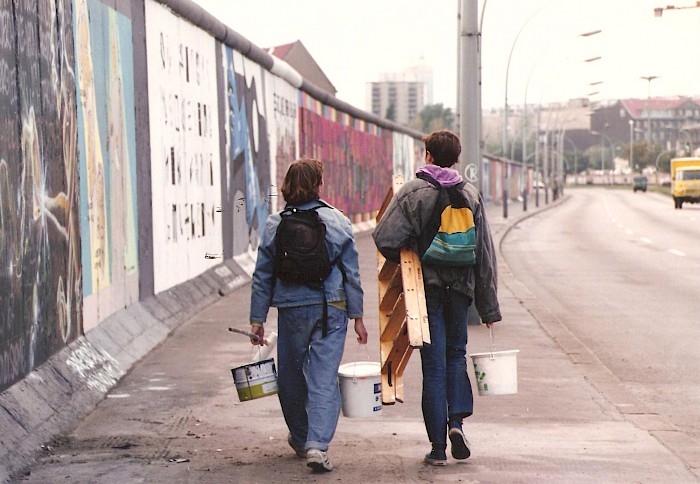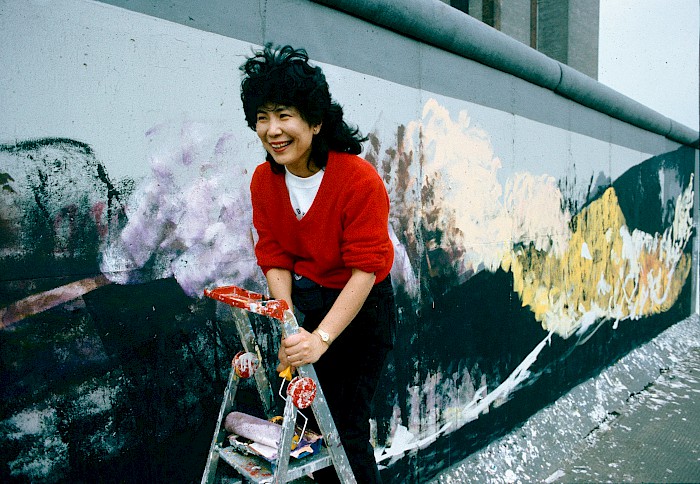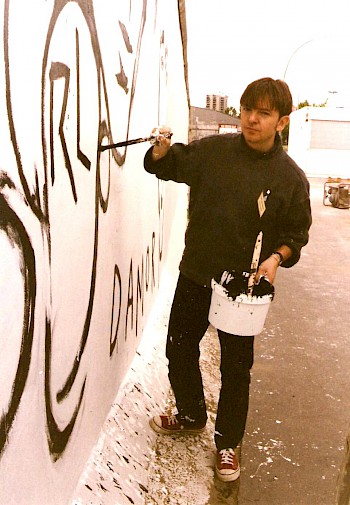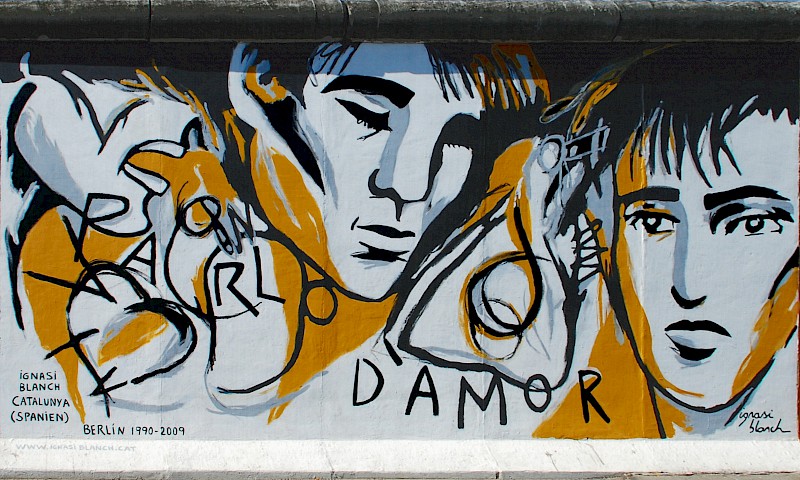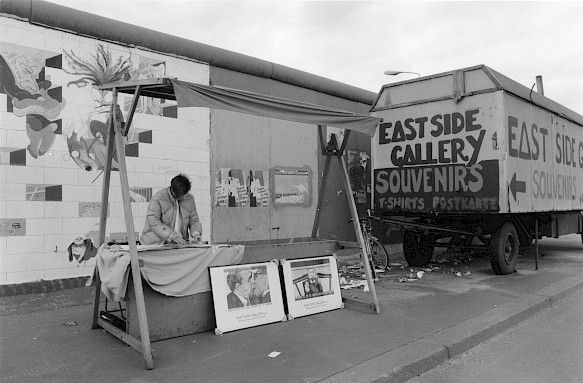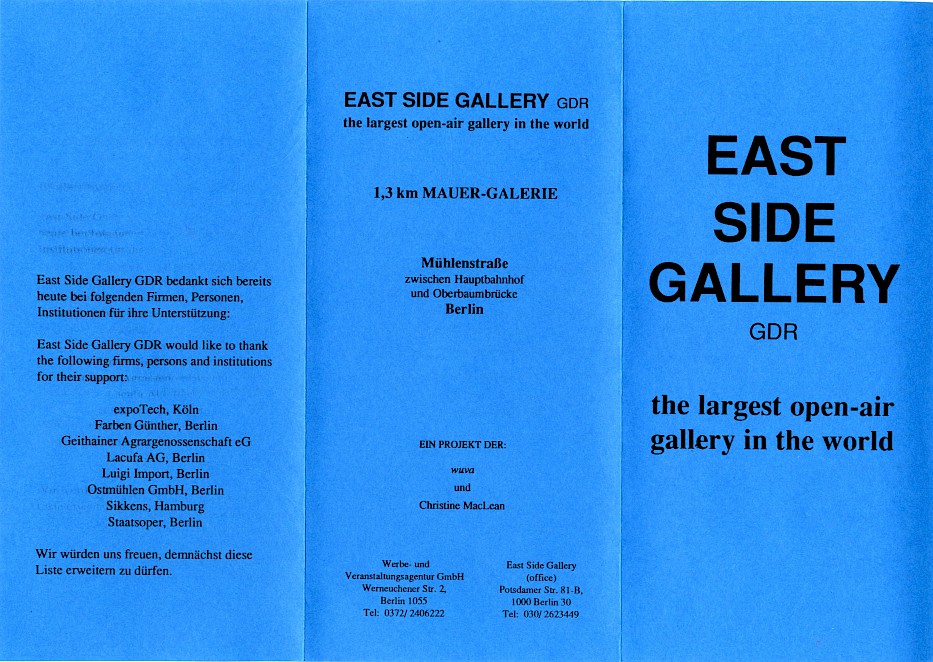1990
Topic
TheEastSideGallery
1990
The Wall as symbol of freedom
Over the summer of 1990, Mühlenstraße drastically changed. 118 artists from 21 countries painted artworks and statements — from the vibrantly abstract to the explicitly satirical, witty, or poetic — on the once threatening Wall and so turned it into a symbol of peaceful change and possibility. About half the artists came from East Berlin or the GDR. They all expressed their hopes and concerns for the future in their paintings on the Wall. Many commented on life under dictatorship in the GDR or elsewhere in Eastern Europe and their experience of the revolution in 1989 / 90. Even while the Gallery was still being painted, people from all over the world came to see the art on the Wall.
"Painting on the Berlin Wall — it’s like the Holy Grail."
Talking about love
With his painting Parlo d’amor, Catalan artist Ignasi Blanch appealed for honest communication about love, whether heterosexual, homosexual or otherwise. In 1990 homosexuality was a taboo topic in Germany as in lots of other countries. Through political and artistic actions, lesbians and gays became more visible and publicly called for social equality. In many places, this demand has still not been met. Because of its continuing relevance, Ignasi Blanch still uses this painting in art projects.
Parlo d‘amor
Getting close to the Wall and touching it was strictly prohibited under the GDR border regime. But in 1990, Christine Kühn invited passers-by to leave their handprint on it. Artworks such as these changed the public’s perception of the Wall. Having once been a symbol of intimidation and control, painting on it was a moving experience for all the artists contributing to the East Side Gallery.
Largest Open-Air Gallery in the World
Even before the two German states were officially unified, on 3 October 1990, the paintings in the East Side Gallery were completed. The Gallery was opened on 28 September. It is a testimony to the mood of experimentation — in society, political participation, and art — that characterised the last months of the GDR. Alternatives for the future were widely discussed. People tried out new ways of living and working and artistically appropriated the parts of the city that had suddenly become accessible.
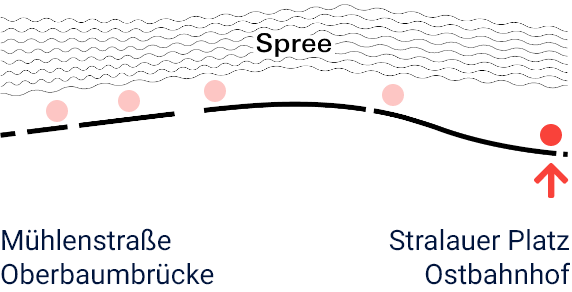
 Leichte Sprache
Leichte Sprache